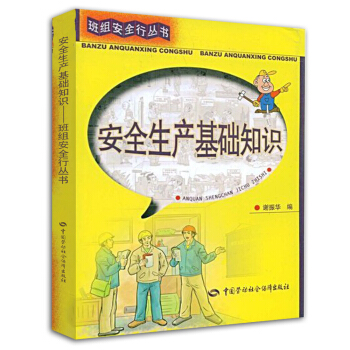![机械设计过程(英文版)(原书第4版) [The Mechanical Design Process]](https://pic.qciss.net/10134481/4c7c661b-bef0-47bc-80a9-25be2f75f563.jpg)

出版社: 机械工业出版社
ISBN:9787111299011
版次:1
商品编码:10134481
品牌:机工出版
包装:平装
外文名称:The Mechanical Design Process
开本:16开
出版时间:2010-04-01
用纸:胶版纸
页数:352
字数:568000
正文语种:英语
具体描述
内容简介
《机械设计过程(英文版·原书第4版)》明确提出了“产品设计”的设计技术,是针对产品设计的设计思想,理论.技术和方法,而对于那些针对“机构”和“零件结构”的设计技术,只作为基础知识介绍。《机械设计过程(英文版 原书第4版)》全面、具体地给出了“设计学”的基本内容,详细地引出了设计的典型步骤,每一个步骤的任务、目标,应考虑的主要问题和常用的解决方法,对产品设计具有很好的指导作用。内页插图
目录
序PREFACE
CHAPTER 1 Why Study the Design Process?
1.1 Introduction
1.2 Measuring the Design Process with Product Cost, Quality, and Time to Market
1.3 The History of the Design Process
1.4 The Life of a Product
1.5 The Many Solutions for Design Problems
1.6 The Basic Actions of Problem Solving
1.7 Knowledge and Learning During Design
1.8 Design for Sustainability
CHAPTER 2 Understanding Mechanical Design
2.1 Introduction
2.2 Importance of Product Function, Behavior, and Performance
2.3 Mechanical Design Languages and Abstraction
2.4 Different Types of Mechanical Design Problems
2.5 Constraints, Goals, and Design Decisions
2.6 Product Decomposition
CHAPTER 3 Designers and Design Teams
3.1 Introduction
3.2 The Individual Designer: A Model of Human Information Processing
3.3 Mental Processes That Occur During Design
3.4 Characteristics of Creators
3.5 The Structure of Design Teams
3.6 Building Design Team Performance
CHAPTER 4 The Design Process and Product Discovery
4.1 Introduction
4.2 Overview of the Design Process
4.3 Designing Quality into Products
4.4 Product Discovery
4.5 Choosing a Project
CHAPTER 5 Planning for Design
5.1 Introduction
5.2 Types of Project Plans
5.3 Planning for Deliverables The Development of Information
5.4 Building a Plan
5.5 Design Plan Examples
5.6 Communication During the Design Process
CHAPTER 6 Understanding the Problem and the Development of Engineering Specifications
6.1 Introduction
6.2 Step 1: Identify the Customers: Who Are They?
6.3 Step 2: Determine the Customers Requirements: What Do the Customers Want?
6.4 Step 3: Determine Relative Importance of the Requirements: Who Versus What
6.5 Step 4: Identify and Evaluate the Competition: How Satisfied Are the Customers Now ?
6.6 Step 5: Generate Engineering Specifications: How Will the Customers Requirement Be Met?
6.7 Step 6: Relate Customers Requirements to Engineering Specifications: How to Measure What?
6.8 Step 7: Set Engineering Specification Targets and Importance: How Much Is Good Enough?
6.9 Step 8: Identify Relationships Between Engineering Specifications: How Are the Hows Dependent on Each Other?
6.10 Further Comments on QFD
CHAPTER 7 Concept Generation
7.1 Introduction
7.2 Understanding the Function of Existing Devices
7.3 A Technique for Designing with Function
7.4 Basic Methods of Generating Concepts
7.5 Patents as a Source of Ideas
7.6 Using Contradictions to Generate Ideas
7.7 The Theory of Inventive Machines, TRIZ
7.8 Other Important Concerns During Concept Generation
CHAPTER 8 Concept Evaluation and Selection
8.1 Introduction
8.2 Concept Evaluation Information
8.3 Feasibility Evaluations
8.4 Technology Readiness
8.5 The Decision Matrix——Pughs Method
8.6 Product, Project, and Decision Risk
8.7 Robust Decision Making
CHAPTER 9 Product Generation
9.1 Introduction
9.2 BOMs
9.3 Form Generation
9.4 Materials and Process Selection
9.5 Vendor Development
9.6 Generating a Suspension Design for the Matin 2008 Mount Vision Pro Bicycle
CHAPTER 10 Product Evaluation for Performance and the Effects of Variation
10.1 Introduction
10.2 Monitoring Functional Change
10.3 The Goals of Performance Evaluation
10.4 Trade-Off Management
10.5 Accuracy, Variation, and Noise
10.6 Modeling for Performance Evaluation
10.7 Tolerance Analysis
10.8 Sensitivity Analysis
10.9 Robust Design by Analysis
10.10 Robust Design Through Testing
CHAPTER 11 Product Evaluation: Design For Cost, Manufacture,Assembly, and Other Measures
11.1 Introduction
11.2 DFC——Design For Cost
11.3 DFV Design For Value
11.4 DFM——Design For Manufacture
11.5 DFA Design-For-Assembly Evaluation
11.6 DFR Design For Reliability
11.7 DFT and DFM——Design For Test and Maintenance
11.8 DFElDesign For the Environment
CHAPTER 12 Wrapping Up the Design Process and Supporting the Product
12.1 Introduction
12.2 Design Documentation and Communication
12.3 Support
12.4 Engineering Changes
12.5 Design for End of Life
读者信息反馈表
精彩书摘
Unfortunately, often what is manufactured by a company using the over-the-wall process is not what the customer had in mind. This is because of the manyweaknesses in this product development process. First, marketing may not be ableto communicate to engineering a clear picture of what the customers want. Sincethe design engineers have no contact with the customers and limited communi-cation with marketing, there is much room for poor understanding of the designproblem. Second, design engineers do not know as much about the manufacturingprocesses as manufacturing specialists, and therefore some parts may not be ableto be manufactured as drawn or manufactured on existing equipment. Further,manufacturing experts may know less-expensive methods to produce the prod-uct. Thus, this single-direction over-the-wall approach is inefficient and costlyand may result in poor-quality products. Although many companies still use thismethod, most are realizing its weaknesses and are moving away from its use.In the late 1970s and early 1980s, the concept of simultaneous engineeringbegan to break down the walls. This philosophy emphasized the simultaneousdevelopment of the manufacturing process with the evolution of the product.Simultaneous engineering was accomplished by assigning manufacturing repre-sentatives to be members of design teams so that they could interact with thedesign engineers throughout the design process. The goal was the simultaneousdevelopment of the product and the manufacturing process.前言/序言
机械工业出版社在2006年出版了美国大卫G·乌尔曼(David G.Ullman)所著《机械设计过程》第3版的中文翻译本,几年以后我们又见到了该书英文原版的第4版,这一版在保留原有特色的基础上有了较大的改进,反映了机械设计近年来的一些重要的发展和研究成果。本书明确提出了“产品设计”的设计原理,是针对产品设计的设计思想、理论、技术和方法的总结,而对于那些针对“机构”和“零件结构”的设计手段,只作为基础知识介绍。同时,本书全面、具体地给出了“设计学”的基本内容,详细地引出了设计的典型步骤,每一个步骤的任务和目标,应考虑的主要问题和常用的解决方法,对产品设计具有很好的指导作用。本书的主要特点是:
1.针对各章节知识点给出了计算机设计用的表格,供设计者参考。
2.给出了更多的设计实例和照片。
3.各章前面给出了“要点问题”(Keyquestions),使读者阅读时目标更加明确。
4.更新了参考资料,使本书更加实用。
用户评价
评分
为什么有的恐龙是集体猎食?
评分还有就是印刷的字体不是很清晰,有重印。看起来吃力。还好,经典教材。
评分蜘蛛是怎样织网的?
评分什么样的海洋生物会发光?
评分奇妙的昆虫故事从这里开始……
评分国内的英文技术书籍比较少。这本还可以。毕竟可比较的选择不是很多。
评分不同种类的蚂蚁是如何生活的?
评分谁在海底生活?
评分动物小辞典
相关图书
本站所有内容均为互联网搜索引擎提供的公开搜索信息,本站不存储任何数据与内容,任何内容与数据均与本站无关,如有需要请联系相关搜索引擎包括但不限于百度,google,bing,sogou 等
© 2025 book.qciss.net All Rights Reserved. 图书大百科 版权所有




![中华人民共和国国家标准:冷库设计规范(GB 50072-2010) [Code for Design of Cold Store] pdf epub mobi 电子书 下载](https://pic.qciss.net/11545200/541bf856N92dc8f12.jpg)



![服装素描技法 [Fashion Drawing] pdf epub mobi 电子书 下载](https://pic.qciss.net/11504051/53c8fb93Nee6dfb7c.jpg)








![中华人民共和国行业标准(JGJ 214-2010·备案号J 1071-2010):铝合金门窗工程技术规范 [Technical Code for Aluminum Alloy Window and Door Engineering] pdf epub mobi 电子书 下载](https://pic.qciss.net/11013870/rBEIDE_e9FAIAAAAAAAcuqpQtRUAAAwmwI-VYsAABzS158.jpg)


